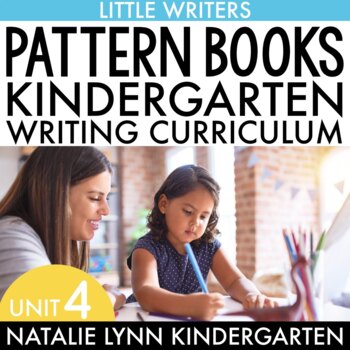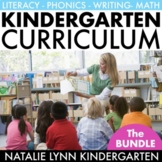Writing Pattern Books Unit Kindergarten Writing Curriculum
- PDF
What educators are saying
Also included in
- Implement your kindergarten writing curriculum with ease - my Kindergarten Writing Curriculum Bundle makes kindergarten writer’s workshop engaging for even the most resistant writer! Each unit includes lesson plans, mentor text suggestions, anchor charts, writing paper, and rubrics. My writing unitPrice $28.00Original Price $56.00Save $28.00
- Teaching kindergarten has never been easier! This kindergarten complete curriculum bundle includes systematic, research-based, age-appropriate, and EFFECTIVE curriculum for kindergarten. Everything you need to teach effective lessons in kindergarten is included.This curriculum is designed with classPrice $250.00Original Price $440.00Save $190.00
Description
Kindergarten Pattern Books Unit // This unit will teach your students to write pattern books. Why teach students to write pattern stories when they have already learned how to tell a story and write across pages? First, it exposes your students to a different type of writing and helps them realize that authors can write different types of books, including books that follow a pattern. Many students don’t realize that writing these types of books is, in fact, writing. Second, this will allow your students who lack confidence in their writing abilities to grow as writers. The later lessons will focus on writing more complex patterns. This will allow you to differentiate the pattern writing for your students.
Find the year-long bundle here: Kindergarten Writer's Workshop for the Year
Lessons:
1. What is a pattern book?
2. Choosing a topic
3. Choosing a pattern
4. Staying on topic
5. Drawing detailed pictures
6. Drawing detailed pictures
7. Stretching out words
8. Making a cover
9. Finger spaces
10. Opposite patterns
11. Question and answer
12. Editing our books
13. Writing our books
14. Sharing our books with partners
15. Author celebration
What's Included:
-Lessons Plans for 15 Days
-Anchor Chart Pieces
-Writing Paper
-Editing Checklist
-Turn and Talk Procedures
-Conferring Notes
-Rubric
-Editable Rubric
Mentor Texts (not included):
•You will need multiple pattern books to use as mentor texts. These should be around guided reading levels A/B. You will need one book that has an opposites pattern and one book that has a question and answer format. I did not specify books in this unit because I know you most likely have many options around your classroom.







